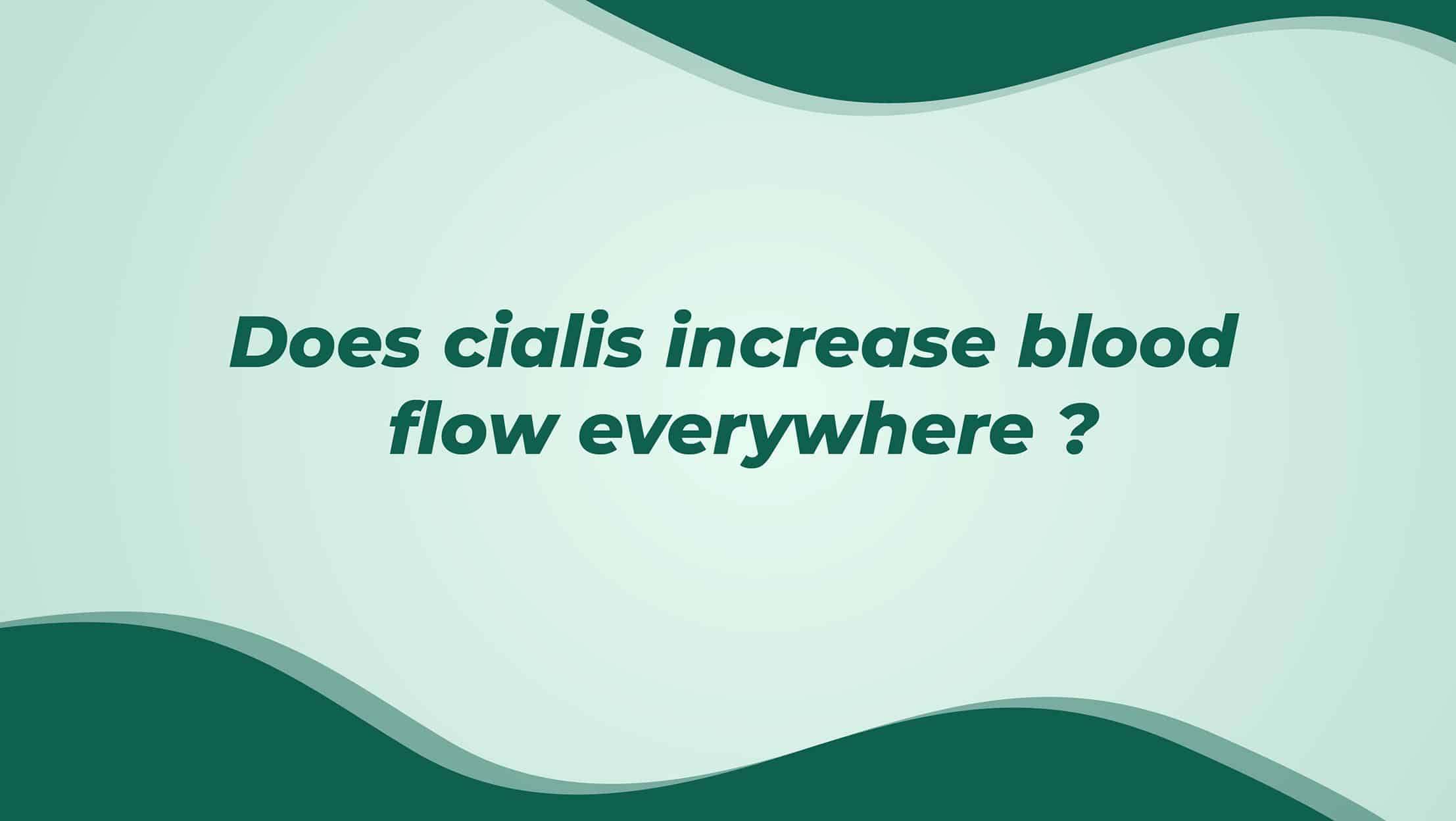Cialis (tadalafil) is one of the most well-known treatments for erectile dysfunction (ED). It’s trusted by millions of men not just for its effectiveness, but also for how safely it improves sexual performance.
But one common question keeps coming up: Does Cialis increase blood flow throughout the entire body, or only in specific areas like the penis?
To answer this, we need to understand how Cialis actually works. While it does enhance blood circulation, the effects are not as widespread as many assume.
In this guide, we’ll explain how Cialis targets specific areas, how it influences blood flow, and why it doesn’t cause a full-body increase in circulation.
What Is Cialis and How Does It Work?
Cialis belongs to a class of drugs called PDE5 inhibitors. These medications are primarily prescribed for erectile dysfunction (ED) and benign prostatic hyperplasia (BPH). They work by relaxing smooth muscle tissue and widening blood vessels where needed, improving blood flow to specific regions.
Here’s what happens in simple terms:
- Cialis blocks the PDE5 enzyme, which normally breaks down cGMP a chemical that helps relax blood vessels.
- With PDE5 blocked, cGMP stays active longer, allowing blood vessels in the penis to dilate more effectively during arousal.
- This leads to stronger, longer-lasting erections—but only when you’re sexually stimulated.
Does Cialis Improve Blood Flow Everywhere?
Not exactly. While Cialis improves blood flow, it doesn’t do so across your entire body. Here’s why:
- The PDE5 enzyme is concentrated most heavily in the penis and a few other tissues like the lungs and prostate.
- Cialis works where PDE5 is active, meaning its strongest effects are localized not systemic.
- Although it may cause mild drops in blood pressure, it doesn’t lead to full body vasodilation (widening of all blood vessels).
So no, Cialis doesn’t increase blood flow “everywhere.” It targets specific areas especially those involved in sexual function and, in some cases, urinary and pulmonary health.
Where Does Cialis Work Best?
Let’s break it down by body systems:
Penis and Sexual Function
This is where Cialis works best. It relaxes blood vessels in the erectile tissue, allowing more blood to flow into the penis during arousal. This is what makes it effective for ED.
Prostate and Urinary Tract
Cialis is also approved to treat BPH, which affects urination. It helps relax muscles in the prostate and bladder, improving urine flow and reducing frequency.
Lungs (Pulmonary Use)
In some cases, Cialis is prescribed off-label for pulmonary arterial hypertension (PAH). It relaxes blood vessels in the lungs, easing the heart’s workload and improving oxygen delivery.
Heart and General Circulation
Cialis may slightly affect blood pressure, but it’s not designed for general circulation improvement. People with heart conditions should use it only under strict medical guidance.
Potential Blood Flow-Related Side Effects
Because Cialis influences blood vessels, some users may experience side effects such as:
- Headaches (due to vessel widening in the brain)
- Flushing (increased facial blood flow)
- Nasal congestion
- Dizziness or light-headedness, especially when standing suddenly
- If you experience chest pain, fainting, or severe dizziness after taking Cialis, seek medical help immediately.
- Never combine Cialis with nitrate medications (often used for chest pain). This combination can dangerously lower blood pressure.
Why Doesn’t Cialis Affect Blood Flow System-Wide?
The answer lies in its targeted mechanism:
- PDE5 is mostly found in the penis, prostate, and lungs.
- Cialis is selective it primarily acts where PDE5 exists in large amounts.
- Unlike medications like nitroglycerin (which dilates vessels throughout the body), Cialis is localized and gentler on overall blood pressure.
Clinical Uses Beyond ED
While Cialis is best known for treating ED, it has proven clinical value in other areas too:
- Benign Prostatic Hyperplasia (BPH): Relieves urinary symptoms by relaxing bladder and prostate muscles.
- Pulmonary Arterial Hypertension (PAH): Improves heart-lung circulation when used in higher or specialized doses.
Researchers are also studying its effects on vascular health, but more clinical evidence is needed before Cialis is recommended for general circulation support.
Key Takeaways
- Cialis boosts blood flow primarily in the penis and a few other areas like the prostate and lungs.
- It does not cause full-body circulation increases, making it a safer option for men with certain heart or blood pressure concerns.
- For those with ED or BPH, Cialis offers targeted, reliable relief without system-wide effects.
- Always consult your doctor before starting Cialis—especially if you take heart medications or nitrates.
Conclusion
Cialis helps improve blood flow to where it is needed for sexual function and it is considered safe. Therefore, don’t take it without a doctor’s supervision, since some risks can occur. Feel free to get in touch if anything worries or confuses you. All our safety priorities are based on your health and safety.
Frequently Asked Questions (FAQs):-
Does Cialis increase blood flow throughout the entire body?
Cialis only increases blood flow in the erectile tissues. The drug does not broadly dilate blood vessels.
How does Cialis improve erections?
Taking Cialis makes the blood vessels in the penis relax which stops PDE5 and ensures men have stronger erections.
Does Cialis help with conditions other than ED?
Some doctors use Cialis for enlarged prostate and in ways not approved for pulmonary arterial hypertension.
What are common side effects related to blood flow changes?
Light dilation of arteries outside the penis may cause a headache, flushed face, blocked sinuses and dizziness.
Does Cialis interact with other medications affecting blood flow?
When you mix Cialis with any medicine containing nitrates or blood pressure drugs, your blood pressure may fall drastically.
Can Cialis improve blood flow to muscles during exercise?
Cialis enhances blood flow to your muscles, but it won’t increase your gains after your workouts.
References
1. fda.gov











